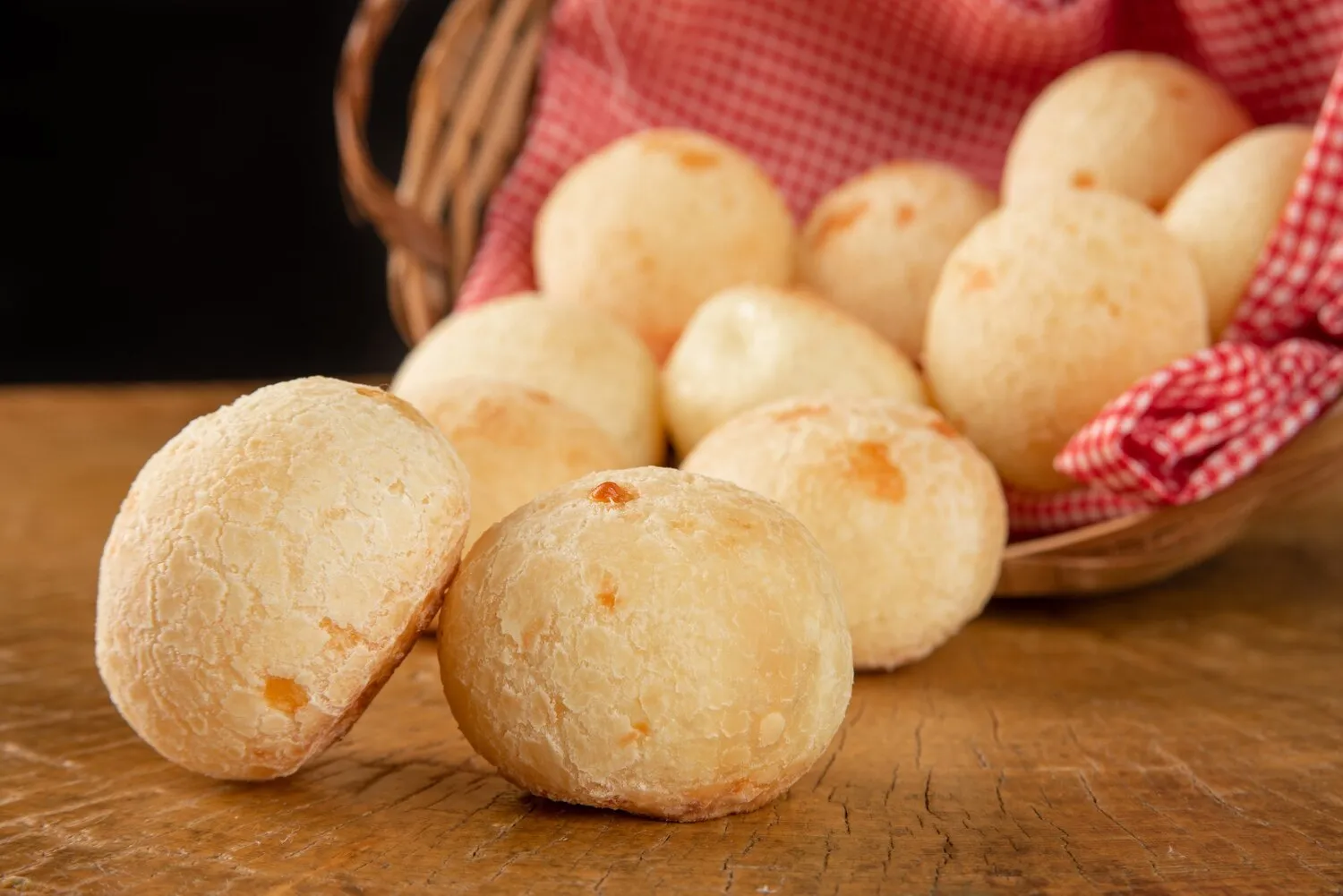
Pão de Queijo
Classic Brazilian cheese bread, a staple in bakeries. Chewy and cheesy.
Nutrition Facts
* The % Daily Value (DV) tells you how much a nutrient in a serving of food contributes to a daily diet. 2,000 calories a day is used for general nutrition advice.
The exact origins of Pão de Queijo are somewhat debated, but it's widely believed to have originated in the state of Minas Gerais, Brazil, during the 18th century. The dish likely arose from a combination of factors, including the abundance of cassava starch (tapioca flour) and cheese in the region, and the resourcefulness of enslaved Africans and Portuguese settlers in utilizing available ingredients. It reflects a fusion of indigenous and European culinary traditions.
Pão de Queijo is deeply ingrained in Brazilian culture, particularly in Minas Gerais, where it's considered a staple food and a symbol of hospitality and tradition. It's a common breakfast item, snack, and accompaniment to coffee, and is often served to guests as a welcoming gesture.
Breakfast Staple
Pão de Queijo is a common breakfast item throughout Brazil, often enjoyed with a cup of strong coffee (cafezinho).
Social Gathering Food
It's frequently served at social gatherings, parties, and cafes, making it a popular snack and appetizer.
Regional Pride
In Minas Gerais, the dish is a source of regional pride and culinary identity. Many families have their own secret recipes passed down through generations.
Symbol of Hospitality
Offering Pão de Queijo to guests is a traditional sign of welcoming them and showing hospitality.
Pão de Queijo boasts a unique flavor profile that balances savory, cheesy, and slightly tangy notes. The texture is equally important, offering a delightful chewiness that is a hallmark of the dish.
The primary flavors come from the tapioca flour (or cassava starch), which provides a slightly tangy and chewy base. The cheese, traditionally Minas cheese, contributes a savory and rich flavor, with varying levels of sharpness depending on the type used. Milk, eggs, and oil/butter add moisture and richness, enhancing the overall flavor. Some variations may include parmesan or other hard cheeses for a more intense cheesy taste.
Tapioca Flour Choice
Use a high-quality tapioca flour for best results. 'Azedo' (sour) tapioca flour is often preferred for its distinctive flavor and chewy texture, but a combination of 'doce' (sweet) and 'azedo' can also be used.
Cheese Selection
The type of cheese significantly impacts the flavor. Minas cheese is traditional, but other cheeses like mozzarella, parmesan, or cheddar can be added for different flavor profiles. Experiment to find your favorite blend.
Liquid Temperature
Scalding the tapioca flour with hot liquid (milk/water/oil) is crucial for gelatinizing the starch and creating the signature chewy texture. Ensure the liquid is hot but not boiling violently.
Oven Temperature and Baking Time
Baking at the correct temperature (usually around 350-400°F or 175-200°C) is essential for achieving a golden brown exterior and a fully cooked interior. Baking time can vary depending on the size of the balls.
Freezing for Later
Pão de Queijo dough can be easily frozen. Shape the dough into balls and freeze them on a baking sheet before transferring them to a freezer bag. Bake directly from frozen, adding a few minutes to the baking time.
Explore additional Handy food dishes and restaurants
Explore Handy foodDiscover top dining spots and culinary experiences in Itu.
Explore ItuLearn more about the food culture, restaurant scene, and culinary heritage of Brazil.
Explore Brazil